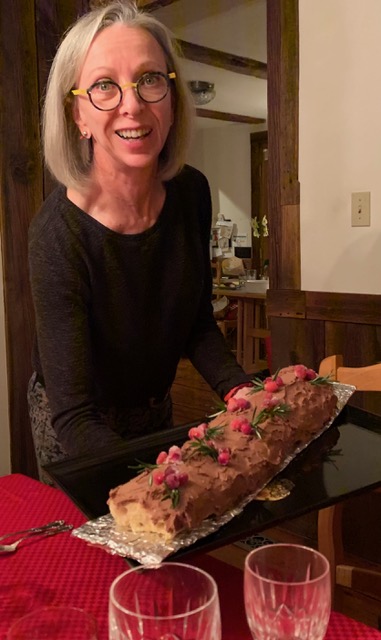
Food Studies Lecturer Cathy Kaufman Explores the Familial and Cultural Traditions Found in Holiday Meals
Of the many familial and cultural traditions tied to the winter holidays — Christmas, Hanukkah, Kwanzaa, New Year’s — none are more satisfying and varied than the foods prepared to celebrate these holidays. Cathy Kaufman, a lecturer in the Food Studies program at the Schools of Public Engagement, researches many of the traditions that will be shared among family and friends during the winter months.
In The New School’s Food Studies program, connections between food and culture are explored. Kaufman’s specialization in culinary history has led her to research culinary traditions around the world. While some countries have distinctive holiday traditions, like le Réveillon, an elaborate multicourse meal served in some French- and Portuguese-speaking countries after Midnight Mass on Christmas Eve, customs vary more in the United States. According to Kaufman, while many people default to the traditional English Christmas menu of roast turkey or goose, Americans tend to serve the foods familiar to them from childhood.
“Unlike Thanksgiving dinner, where practically every table will include turkey or possibly a vegan equivalent like Tofurkey, winter holiday meals vary tremendously according to religion and region and from family to family,” says Kaufman. “People have a tendency to prepare dishes that were served when they were children, and they pass along that family tradition through their own holiday meals. In the South, there will probably be ham and biscuits, in the Southwest you might find tamale pie, and in other areas, like New England, a turkey or goose might be served.”
On Hanukkah, it is customary to eat fried foods, but, as Kaufman explains, the dishes served by Jewish families in the United States reflect differences in region and country of origin. “Traditionally food fried in oil is served, but whether you’re eating latkes [potato pancakes], sufganiyot [jelly doughnuts], or other fried foods again is often based on what you experienced as a child.” As for Kwanzaa, a relatively new holiday that derives from African harvest festivals, Kaufman notes that while traditions are still evolving, they tend to focus on foods of the African diaspora, such as soul food.
Kaufman notes that certain American holiday foods are of recent vintage, pointing to dishes created during the mid-20th century, like green bean casserole. “At that time, canned goods like green beans and soup were seen as healthier and safer than those bought from a greengrocer,” Kaufman explains. “The industrialization process was seen as offering a higher level of hygiene and cleanliness.” Companies like the Campbell Soup Company developed their own recipes, like green bean casserole, featuring their products. Although canned and processed foods have declined in popularity in the United States, many families still serve these dishes. “You’ll see that there are some dishes that people only prepare for the holiday meal, like green bean casserole or candied sweet potatoes” says Kaufman. These family food traditions help forge emotional connections while marking cultural and familial identities. “There are dishes families won’t make any other time of the year, but if it was on the table when they were a child, they’ll serve it now. It’s become part of their family tradition.”